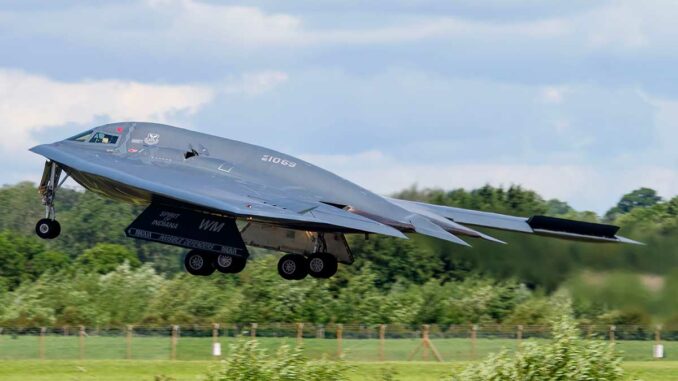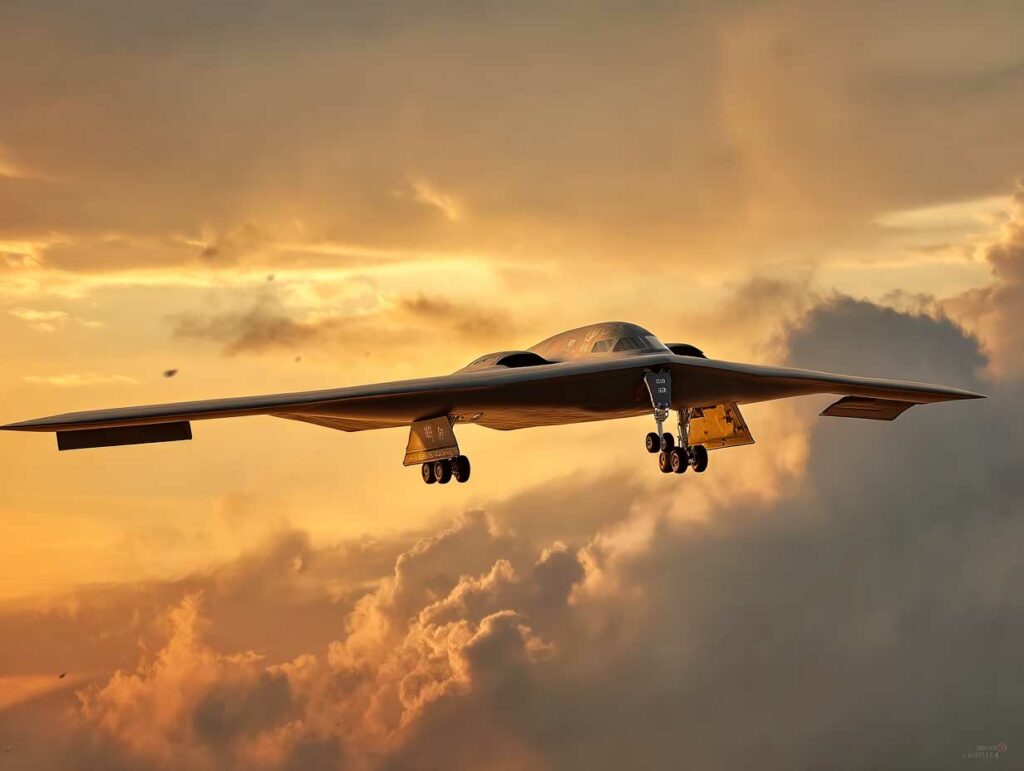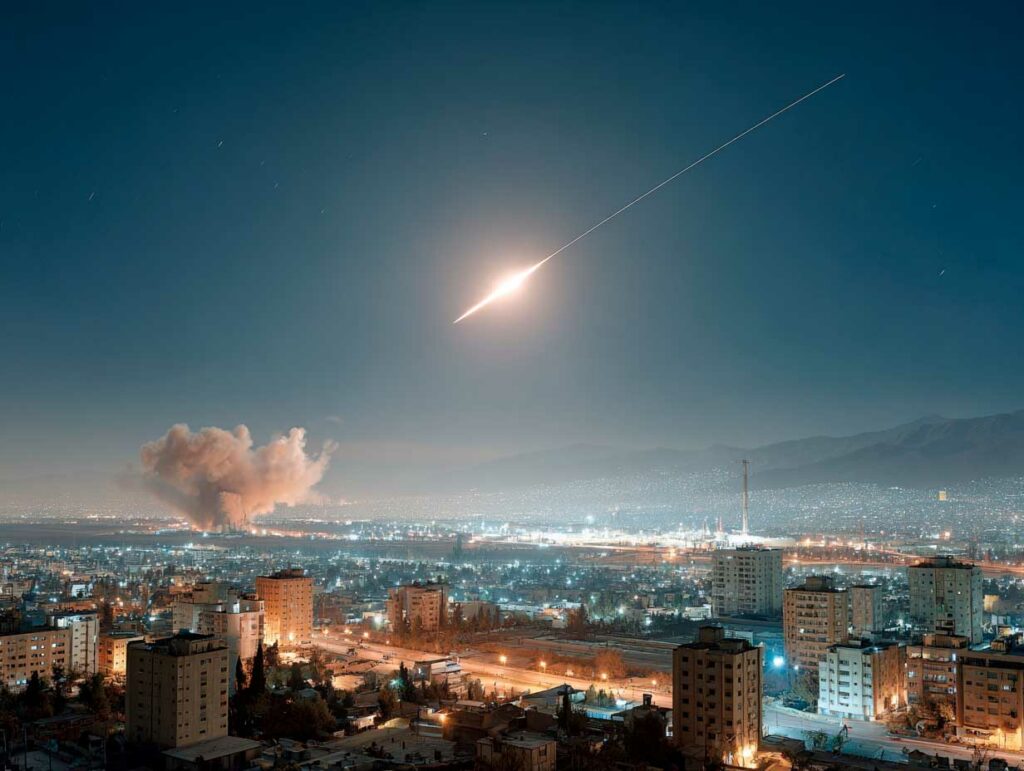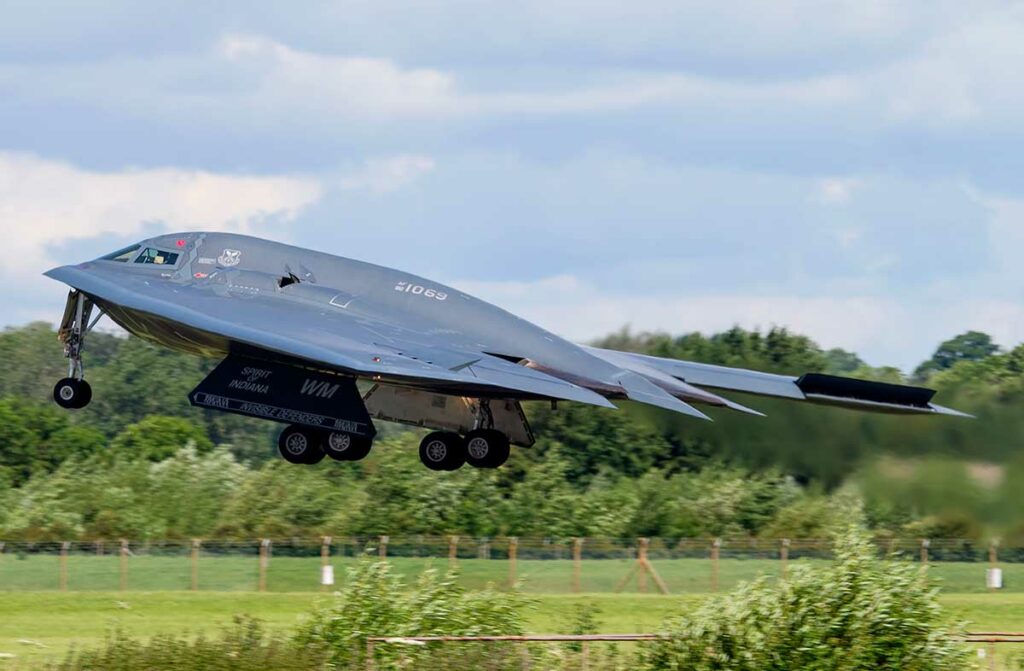
The United States mobilized B-2 Spirit aircraft and GBU-57 bombs to strike Iranian nuclear sites. A detailed look back at Operation Midnight Hammer.
On the night of June 21-22, 2025, the United States launched Operation Midnight Hammer, a coordinated air mission aimed at neutralizing three Iranian nuclear sites: Fordow, Natanz, and Isfahan. Seven B-2 Spirit stealth bombers flew more than 13,000 kilometers from the United States to drop 14 GBU-57/B bombs weighing 13.6 tons, capable of penetrating the most protected underground structures. The attack was coordinated with Tomahawk missile strikes fired from an Ohio-class submarine. More than 125 aircraft were mobilized. The mission did not elicit any response from Iranian defenses. The damage is extensive, but the nuclear facilities have not been completely destroyed. This operation, the largest involving the B-2 to date, marks a critical step in the US nuclear deterrence strategy.

Meticulous planning for a joint attack
Operation Midnight Hammer was not the result of an improvised reaction, but of several years of strategic planning. It was designed to respond to a specific scenario: neutralize Iran’s nuclear facilities while minimizing the risk of military escalation.
The entire mission was coordinated between several components: air, naval, space, and cyber. 125 aircraft were mobilized, including seven B-2 Spirit bombers, several 4th and 5th generation fighter jets, air refueling aircraft, electronic warfare aircraft (EA-18G Growler) and intelligence and surveillance platforms.
The operation also included deception measures: two B-2s were sent to the Pacific to simulate a parallel operation, supporting an electronic diversion effort. The aim was to mislead OSINT observers (open source intelligence) and Iranian defenses. This type of maneuver demonstrates a high level of mastery of operational intelligence and cognitive warfare.
The strike was conducted in accordance with the War Powers Act, with members of Congress being informed once the aircraft had left Iranian airspace. This underscores the controlled political dimension of this operation.
The central role of the B-2 Spirit and the GBU-57
The B-2 Spirit is currently the only bomber in the world capable of delivering the GBU-57/B Massive Ordnance Penetrator, a 13,608 kg bomb designed to penetrate underground structures more than 60 meters deep in reinforced concrete. This operation marked the first actual use of this weapon.
The seven bombers, which took off from Whiteman Air Force Base (Missouri), made a direct 36-hour round trip, including several in-flight refuelings. Each B-2 carried two GBU-57/B bombs, for a total of 14 bombs dropped on Fordow and Natanz, sites known to house centrifuges and underground nuclear infrastructure.
The initial results confirm significant damage to the structures. At Fordow, the access tunnels have been blocked, the site’s terrain shows land subsidence, and a thick layer of ash covers the surface. However, US sources acknowledge that the site is not completely destroyed, mainly due to its extreme depth.
This mission confirms the operational reliability of the B-2, despite its age (it entered service in 1997). It remains the only stealth bomber with intercontinental range capable of achieving such a level of precision and penetration.

Naval support and the role of Tomahawk missiles
The naval component was provided by an Ohio-class nuclear-powered cruise missile submarine (SSGN) capable of firing up to 154 Tomahawk missiles. As part of the operation, it launched more than 24 missiles against the Isfahan site, just before the B-2s entered Iranian airspace.
The Tomahawk Block IV, with a range of 1,600 kilometers and an accuracy of less than 10 meters, enables remote neutralization of air defense systems or critical infrastructure. The firing was carefully timed to coincide with the air assault, ensuring a saturation and surprise effect.
The strikes on Isfahan caused significant structural damage, visible in satellite images released by Maxar Technologies. Several administrative and technical buildings were hit, although the area had already been struck by Israeli strikes in June.
This combined sea-air bombardment illustrates a US doctrine of integrated engagement, based on synergy between submersible and air vectors, with a deep strike logic. This is a rare operational example of multi-domain coordination in a distant theater.
Iran’s response and geopolitical implications
From a military standpoint, the operation was a tactical success: no US casualties, no response from Iranian air defenses, and no radar detection. The AGM-88E AARGM missiles were likely used to take out SAM radars. The lack of Iranian response raises questions about Tehran’s actual ability to detect or counter stealth strikes.
But strategically, the effect is more complex. The US administration insists on the non-extensive nature of the operation. This is not a regime change, but a targeted action aimed at preventing the acquisition of nuclear weapons. The president has emphasized that he wants a diplomatic solution.
However, the regional consequences are significant. Iran has announced that it reserves the right to retaliate, potentially via ballistic strikes or drone attacks on US bases in the Gulf. The closure of the Strait of Hormuz, through which 20% of the world’s oil passes, remains a plausible scenario.
Furthermore, the operation was carried out in implicit coordination with Israel, which reportedly neutralized several Iranian air defense batteries prior to the attack. This strengthens US-Israeli military ties, but increases tension with pro-Iranian militias in Iraq, Syria, and Lebanon.

Medium-term military and technological outlook
Operation Midnight Hammer could have lasting consequences for the military doctrines of the major powers. It validates the use of a long-range stealth strike force, combined with high-penetration weapons and global joint coordination.
It also highlights the US’s dependence on the B-2, even though the B-21 Raider (replacement) program is still in the testing phase. The stealth, endurance, and payload of the B-2 justify its continued service beyond 2035.
On the Iranian side, the strike could trigger accelerated development of passive detection systems, low-frequency radars, and integrated anti-stealth systems. Tehran could also revise its doctrine of dispersing sensitive infrastructure and strengthen its partnerships with external suppliers such as Russia.
Finally, the successful use of the GBU-57/B demonstrates that conventional kinetic technology remains capable of dealing with buried nuclear targets without resorting to a nuclear weapon. This could influence deterrence doctrines, particularly in relation to underground programs in North Korea or elsewhere.
War Wings Daily is an independant magazine.